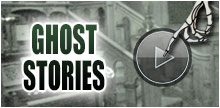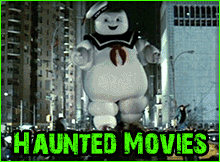Public interest in the assassination of President
John F. Kennedy has never died down. People around the world want
to know who killed the president and why and how he died. They also
want to know what the killer's hidden motives might have been, and
whether he had acted alone. Their insistent questions led to the
formation of the House Select Committee on Assassinations, a congressional
group.
In 1978, the House Select Committee came to a conclusion
that many un-official investigators had already reached: that the
president's slaying was the result of a conspiracy. As we have already
seen, a conspiracy means that two or more persons were involved
in a criminal act.
Until that time, the Warren Commissioned Report,
originally released in September 1964, was the only official one.
The report stated that a solitary gunman named Lee Harvey Oswald
was responsible. Working alone, he shot and killed the president.
Oswald was soon captured and held by the Dallas, Texas, police for
two days. Then Oswald himself was slain as he was being transferred
from one jail to another. Oswald's slayer was Jack Ruby.
The Warren Commission decided that Ruby acted for
twisted emotional reasons and that he, too, acted alone. There was
no conspiracy involved in either case. So said the Warren Commission.
The House Select Committee's declaration of conspiracy
inspired a rash of books and at least two movies, as well as several
TV programs. New ones keep popping up, well into the 1990's. Each
book and movie has asserted that its analysis is the only foolproof
one. As yet, however, none of these has been accepted as offering
all the right answers.
Let's look at some of these accumulated ideas and
theories, and perhaps come to some conclusions of our own. Bear
in mind that some of these assertions and accusations sound highly
believable. But remember, too, that no charges have been filed against
anyone, and no arrests have been made. Will there be any in the
future, you ask? Perhaps so; perhaps not.

The JFK assassination data can be divided into
three groups:
1. The Method, or Means: How was the president
killed?
2. The Motives: Why was he killed?
3. The Men Involved: Who killed him?
1. THE METHOD OR MEANS:
The president was riding in his open limousine,
his back to the Texas School Book Depository, where, on the sixth
floor, Oswald was said to have been perched. His rifle, propped
up by book cartons, was aimed directly at the back of the president's
head.
Ahead and to the right of the president's motorcade
was the grassy knoll. There many spectators stood, ready to cheer
the president as he passed by. Among them, another gunman may have
been waiting for HIS chance to fire.
Oswald was accused of firing several shots from
his position in the Texas School Book Depository. Two of these struck
the president in the back of the head. But a third shot is said
to have entered the president's throat, just above his Adam's apple,
and emerged through the back of his neck.
Did this third shot actually go from the front
of his neck to the back? Doctor's at Parkland Hospital in Dallas,
where the dying president was taken, and doctors at the Bethesda
Naval Hospital, where the dead president was AGAIN examined, disagree.
The Parkland groups say there was an entry wound in his throat.
The Bethesda group, on the other hand, says there was an EXIT wound
in his throat.
Many spectators standing on the grassy knoll at
the time of the slaying reported hearing at least one rifle shot
fired from nearby. They also reported seeing as many as four men
hurrying away from the back of the knoll as soon as the shots were
fired. The Warren investigators quizzed several of these witnesses
but came to no conclusion.
Oswald may have indeed fired the shots that killed
the president, but there is no clear-cut evidence that he ALONE
did so. Nor was he even definitely linked with the sixth-floor window
from where the shots were fired. Only minutes after the shooting,
he was drinking a Coca-Cola. Could he have left the firing site
and composed himself so quickly? Here's another factor to consider:
firing a cheap rifle, as Oswald did, should have left a powder burn
on his cheek. After Oswald was arrested, his cheek was examined:
no such powder burn was found!
After Oswald's death, his palm print was found
on his rifle butt, indicating that it was he who did the shooting.
Some investigators charge, however, that a palm print could have
been transferred from his hand to the rifle butt after Oswald's.
This could have been one of many illegal efforts to tie Oswald to
the crime.
2. THE MOTIVES:
Why was President Kennedy assassinated? Many reasonable
speculations have been offered. None, however, has been positively
proven.
One set of theories says that it was the president's
plans for Vietnam that prompted his murder. By 1963 (the assassination
year), the United States was becoming more and more involved in
the Vietnam war. The U.S. had already sent supplies, arms, and several
thousand "advisers" and "instructors."
But the president wanted to go no further in aiding
South Vietnam. He was ready to stop sending aid, even though South
Vietnam claimed to have a democratic government and an army eager
to wage war against North Vietnam. The president said that Vietnam
was too far away from the United States, that South Vietnam's claim
to democracy was false, and that the U.S. had no business sending
American troops to fight in what was really a local war.
So, the theory goes, the president was killed by
those who wanted the United States to become actively involved in
the Vietnam war. Another theory holds that Kennedy was killed because
he failed to help the Cuban exiles in their 1961 attempt to invade
Cuba and overthrow the Communist government of Fidel Castro. And
still another theory claims that, because he did not destroy Cuba
in the Cuban missile crisis of 1962, he angered anti-Castro factions
and so was slain.
Another theory involves the president's relationship
with his brother when Robert Kennedy was attorney general. Robert
was a relentless foe of organized crime. The only way to stop the
attorney general was to kill the president. That's what some investigators
think. They accuse the Mafia Leaders and Jimmy Hoffa, the Teamster
Union chief. Mind you, we are talking theory. No real proof exists.
3. THE MEN INVOLVED:
The movie "JFK" was first shown in December,
1991, and will probably continue to be shown in theaters, on TV,
and on videocassettes for years to come. "JFK" 's screen
credits acknowledge the help of two books: Jim Garrison's "On
the Trail of the Assassins" and Jim Marr's "Crossfire:
The Plot That Killed Kennedy."
The Garrison book is the partial autobiography
of this former New Orleans district attorney. It is mainly about
his struggle to convict a man named Clay Shaw for involvement in
the Kennedy slaying. The book also tells of Shaw's friendship with
Oswald during the summer of '63 in New Orleans, AKA the Big Easy.
Garrison argues that Shaw's connection with Oswald makes him part
of the Kennedy slaying. Garrison's book ends with the not-guilty
verdict that freed Clay Shaw. "On the Trail of the Assassins"
is a true-to-life story, perhaps over-dramatized a bit when Garrison
puts made-up words in his character's mouths. Marr's book is factual,
without a story line as in the Garrison book. It gathers up the
accounts of many investigators, but comes to no final conclusions.
The movie "JFK" is something else again.
It follows the story line of the Garrison book---up to a point,
that is. The stunning conclusion abandons the cautious approach
of the Garrison and Marrs books. Instead, it puts a direct, sweeping
accusation in the mouth of a fictitious character known only as
"X."
X proclaims that the conspiracy to kill JFK extends
right up the highest levels of the U.S. government---to the Pentagon,
to the Joint Chiefs of Staff, to the FBI and the CIA, and to the
White House itself.
The movie's director, producer, and writer are
all one man: Oliver Stone. He is responsible for all these statements,
and more. He goes on to tie in the military with American industry
in a military/industrial alliance.
It should be noted that Stone does not name names,
He only says that certain high-ranking men in these organizations
were responsible for the death of the president. They wanted JFK
killed because he was a threat to their plans.
Stone further claims that American Industry wanted
the Vietnam war to continue for reasons of greed: the more war,
the higher industrial profits.
X's charge of conspiracy reaches up into the White
House. Although X does not directly accuse by name the president
who followed JFK into office, there can be no doubt that he meant
President Lyndon B. Johnson, in office from 1963 to 1969. Johnson
was Kennedy's vice president. Before that, he was the U.S. Senate's
Majority Leader. He ran the Senate with an iron hand.
Kennedy had chosen Johnson as his running mate
because Johnson could produce a winning number of votes. Johnson
expected to take an active role in the Kennedy government. After
entering office in 1961, however, he was largely ignored. His duties
were mostly confined to cutting the ribbon when a new bridge or
park was dedicated.
And Johnson was losing many of his once-loyal Texas
followers. He sat silent, biding his time. That time came, his accusers
say, when the president rode in the open limousine down a Dallas
street, Johnson, his enemies claim, engineered the whole assassination
program.
These are extremely serious charges, but they cannot
be proven. Investigators have not been able to definitively link
LBJ to the killing of JFK. There is no question that Johnson was
an ambitious, powerful politician. Author Craig Zirbel, in his book
"The Texas Connection," attempts to prove Johnson's guilt
by eliminating all other suspects. Eventually, only Johnson is left.
Therefore, he must be guilty, according to Zirbel.
As for Jack Ruby, Oswald's killer, new facts have
come to life. Over the years it has been shown that he was a close
associate of many criminals. They would have liked to see the president
and his brother killed so that their illegal and unlawful activities
could expand. But Ruby died, as we know, before he could tell his
story.


















